A patch of invasive teasel west of Cienega Pond on the Santa Lucia Preserve earlier this year. Photo by Jackson Brooke.
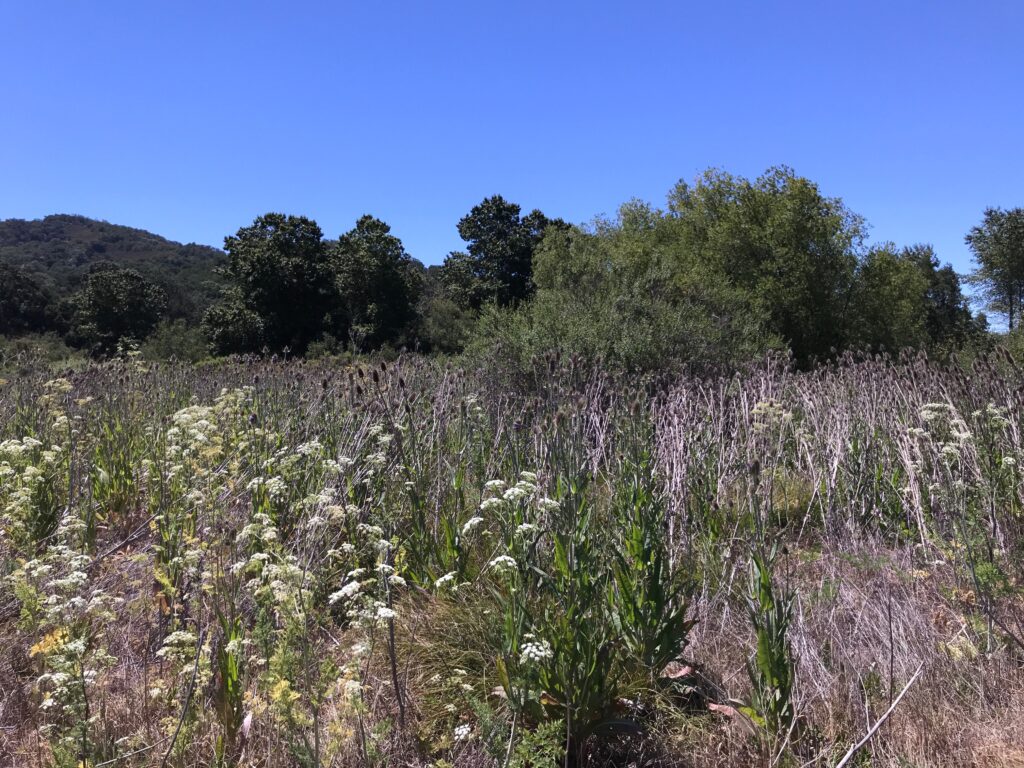
Before & After: Tackling Invasive Teasel in 5 Photos
December 29, 2021
By Jackson Brooke, Restoration Manager
In this post, we’ll take a look at some photos of our work with teasel (Dipsacus fullonum), one of the Conservancy’s Zero Tolerance Species of invasive plants. Plants on the Zero Tolerance list are highly invasive due to their incredibly high rate of seed production and the negative impacts they have on grasslands. French broom and poison hemlock are both high priority species, but are still not as noxious as teasel, which is often spread by human activities.
To combat the spread of teasel, we use a variety of methods, focusing mainly on spot-spraying herbicide and spot-mowing. The pictures in this blog are all of the immediate effects of our mowing efforts. We’ve made great progress on several teasel patches around The Preserve, particularly a couple of patches on either side of Robinson Canyon Road just before the Vasquez gate, but we did find new patches in 2020 near Cienega Pond and the golf course. These photos tell the story of our efforts to get control of the invasion into this new area.
Teasel Patch I
The three photos below show the largest field of this area, due west of Cienega Pond between Robinson Canyon Road and the golf course.
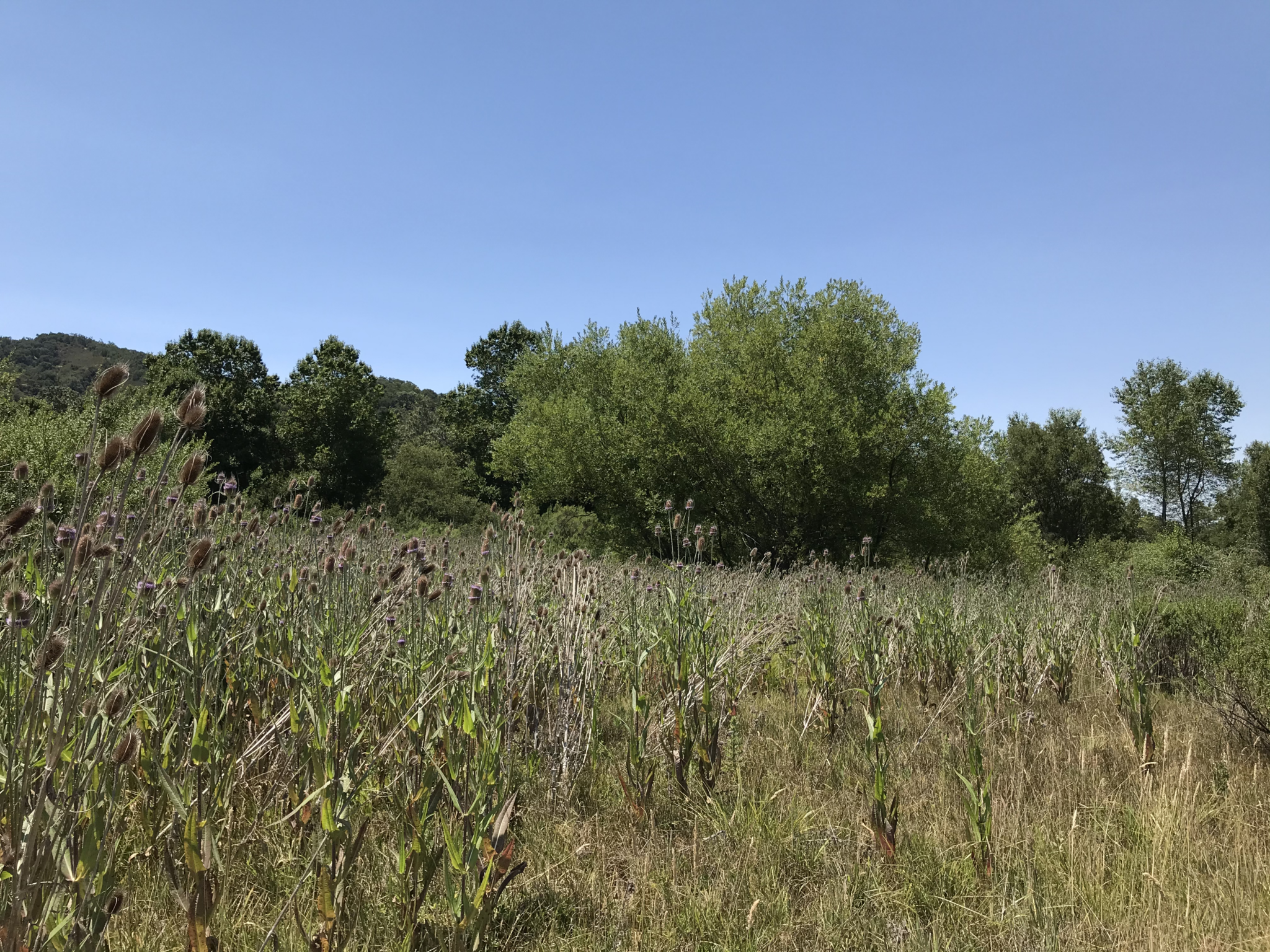
BEFORE (2020): When we came upon this spot in the summer of 2020, we saw a field covered entirely with teasel. Most of the plants were over six feet tall and it grew so closely together that we couldn’t even walk through it. Beginning to mow into it felt like we were creating a corn maze. This photo is from a spot about 30 feet northeast of where the 2021 photos were taken so it’s not a 1:1 comparison, but they depict roughly the same area.
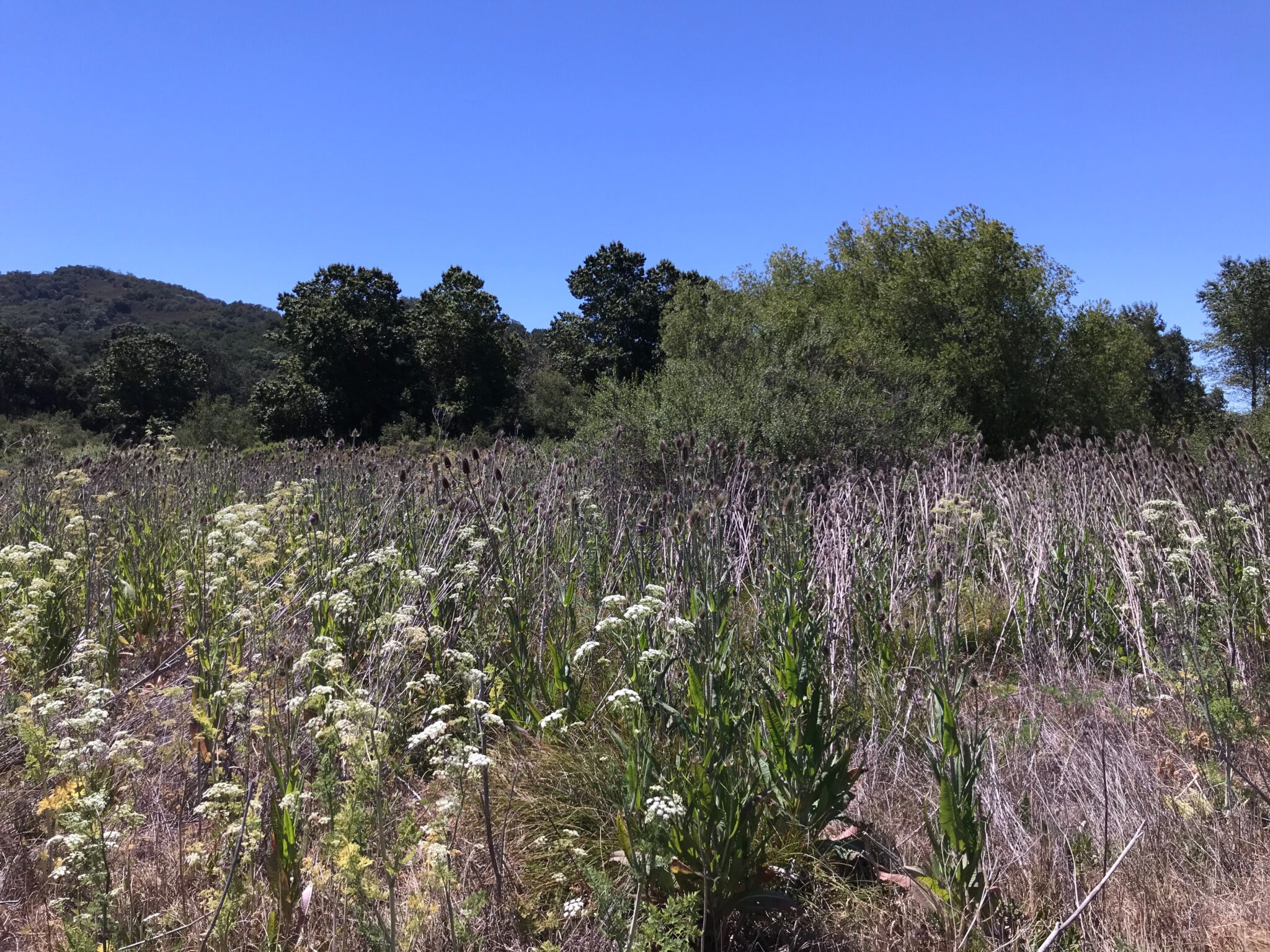
BEFORE (2021): As you can see, upon our return in 2021, the teasel was once again very dense. This was an unsurprising discovery since teasel is a biennial plant, meaning that it has a two year life cycle. In the first year, the plant grows leaves nearly flush with the ground and stores nutrients to prepare for the second year of growth, when it sends up a stalk six to seven feet tall and topped with a spiky cylindrical flower that ranges from pale purple to dark pink.
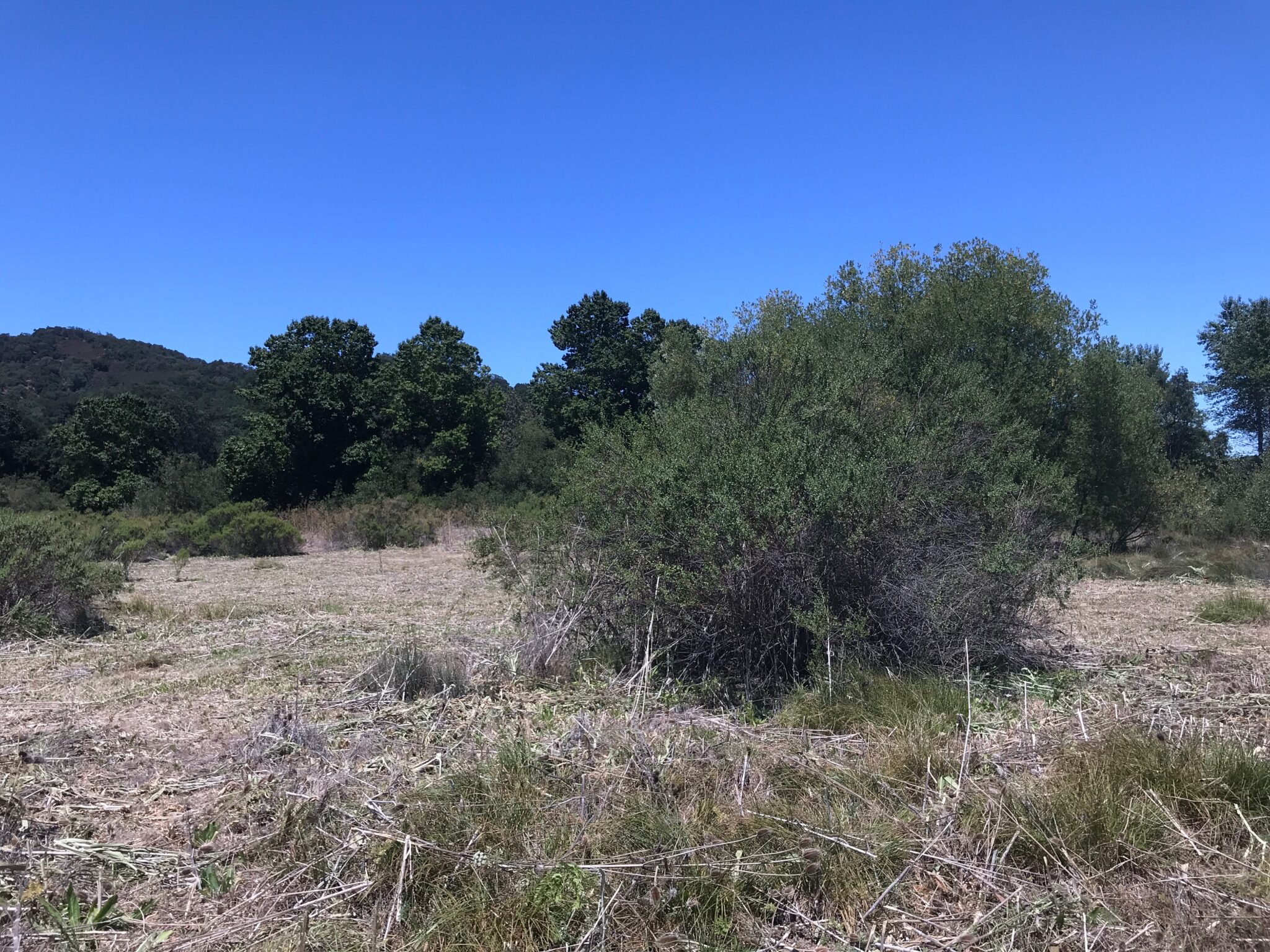
AFTER (2021): Since it’s a biennial, we don’t expect to see major results from our mowing treatments until the 2022 growing season. The thick patch we mowed this year survived treatment last year.
Teasel Patch II
Just northwest of first teasel patch is another patch that is smaller, but just as dense. In 2020 the plants grew so tall and close together that rather than using our normal method of spot mowing individual invasives with weed whackers, we had to use a tractor to mow the entire field down.
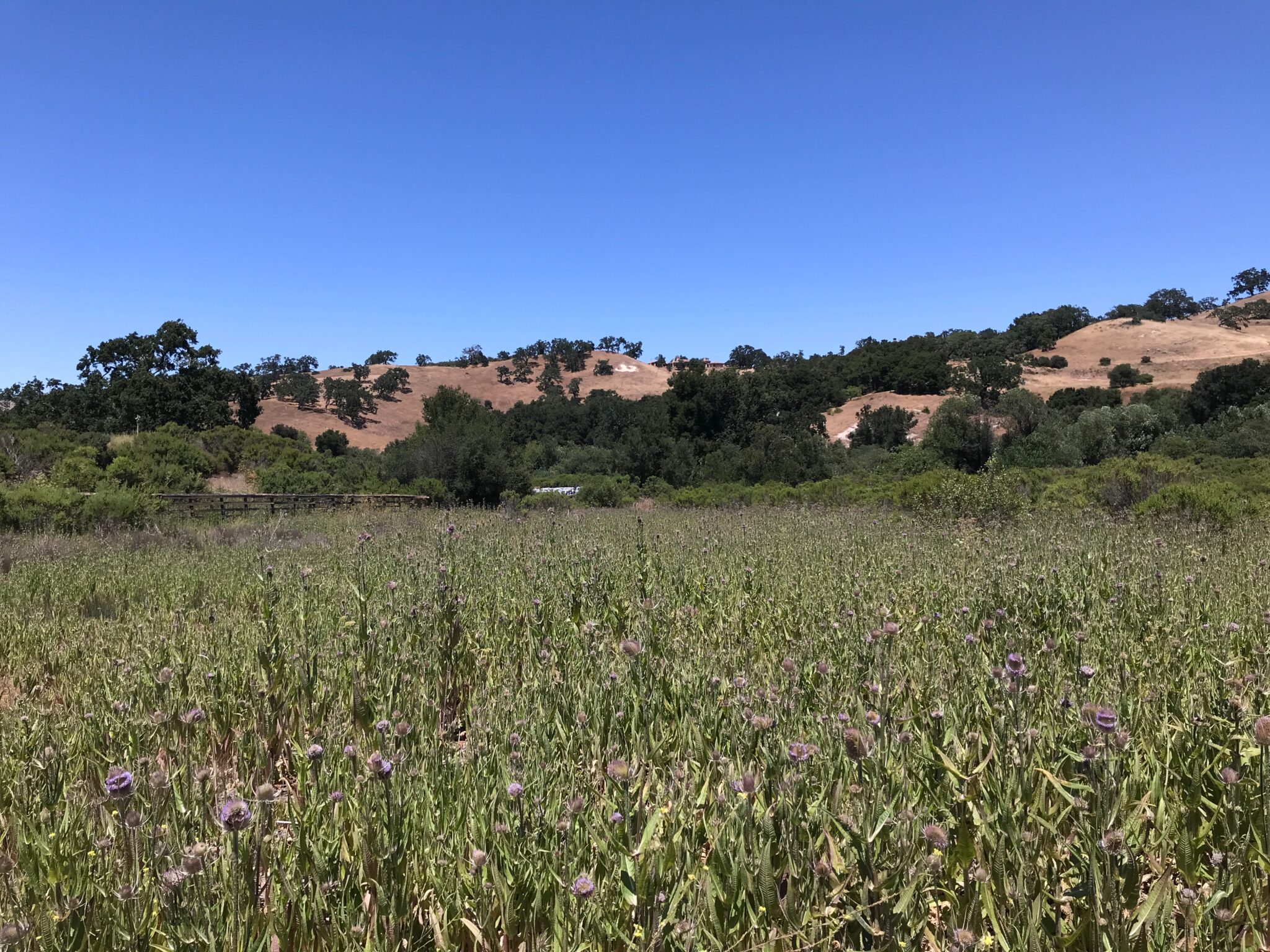
BEFORE (2021): In 2021, we determined that the tractor wasn’t needed as the plants weren’t quite as tall as they had been the year before. Additionally, the tractor can have a negative impact on the land as it not only indiscriminately kills anything the huge mower passes over, but also compacts the soil it drives over, making it harder for native plants to grow. In instances such as this patch in 2020, the negative impacts of using the tractor are far outweighed by the positives of quickly removing a monoculture patch.
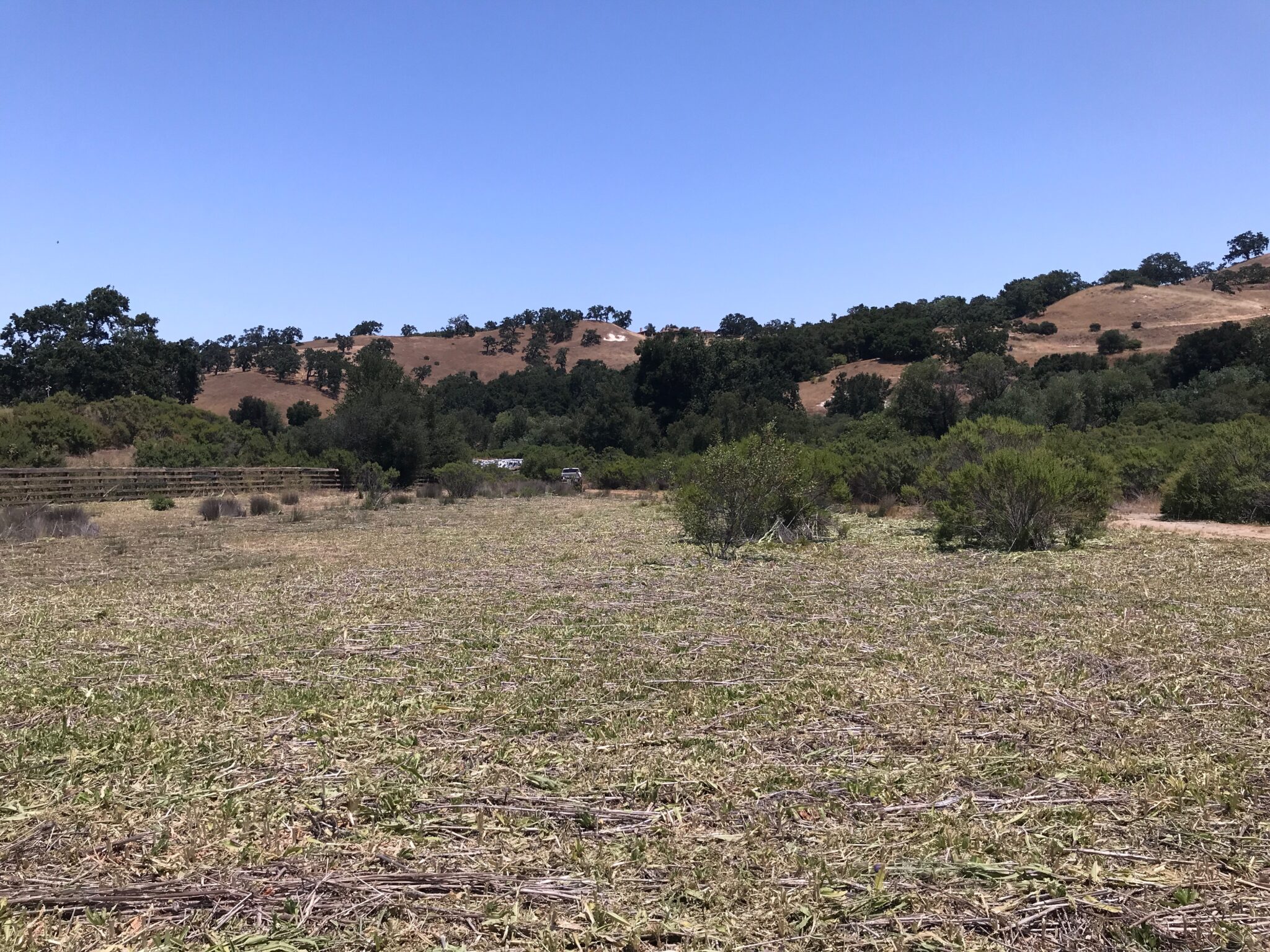
AFTER (2021): This year, our weed whackers and brush hog mower were sufficient to remove this whole patch in a couple of hours. As with the other teasel patch, in 2022 we hope and expect to see some more dramatic reductions in the population size as we will have treated all the plants that were present in both years of its life cycle.
The most effective single treatment for reducing teasel in both years of its life cycle is spot-spraying herbicide. Due to the time and weather constraints that influence which management tools we use, however, we have not been able to spray these areas yet. Other teasel patches, such as in the grasslands along Robinson Canyon Road near the Vasquez gate, have been sprayed and mowed for several years now with great success. We’re confident that the patches we’ve shown in this blog will exhibit the same responsiveness to our continued management.
Were it not for our regular monitoring of The Preserve’s grasslands, these teasel patches would have continued to grow and choke out native species. But with over 5,000 acres of grasslands and an Ecological Management Department of five full-time and up to four seasonal summer staff, finding every patch of invasive weeds is a tall order.
The best way to help manage invasive species on the Preserve is to review our 2021 Invasive Plant Management Guide and notify the Conservancy any time you spot a Zero Tolerance Species. Whether it’s on your Homeland, along a trail, or on the golf course, please contact me at [email protected] or (831) 402-9499.
This is the third post in our before and after photo series. In previous blog posts, we discussed our work hand pulling French broom and the examined our poison hemlock mowing treatments. If you’re curious about a particular invasive species and how we manage it on The Preserve, don’t hesitate to reach out!